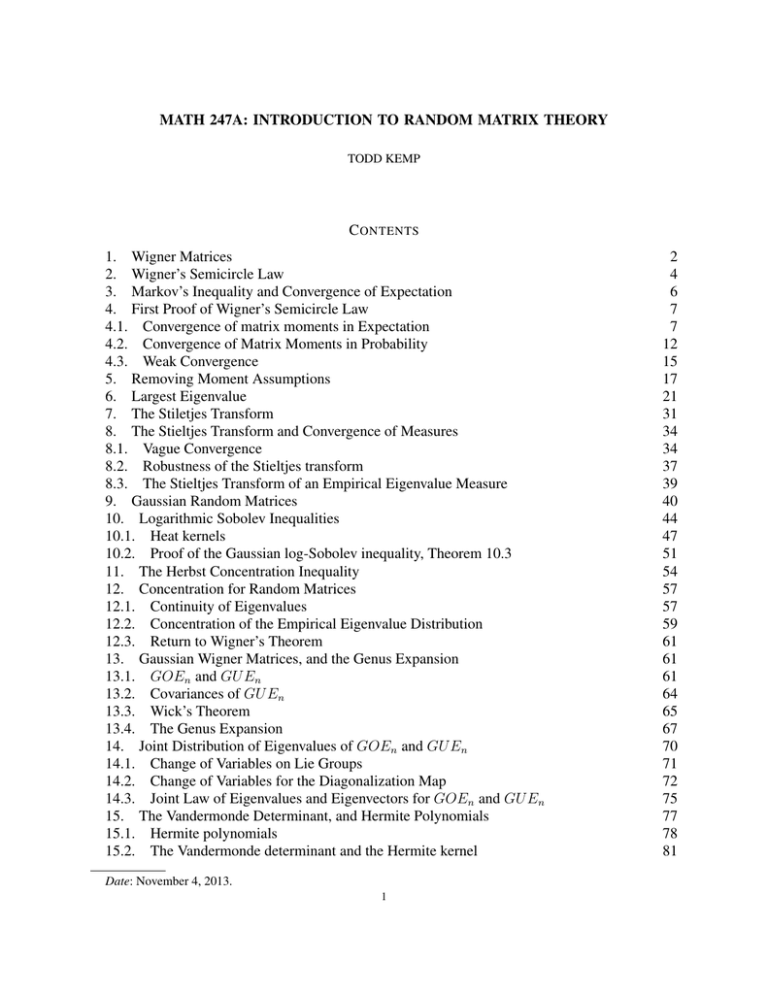
This distribution was determined by Gaudin and Mehta18 andis givenasfollows: dZE P(s)-d-fi-(s) where E(s)det(I-Q), Qbeing the trace class operator on L2(1, 1) whose kernelis sin rs( r/)/2 The Fredholm determinant defining E(s) converges, and it is easy to cheek that P(s) vanishes to secondorderat s 0. 1.2 Mathematical statistics and numerical analysisrandom Hermitian matrix. Ndarray) Second quaternion, or set of quaternions, to compare. In multivariante statistics, random matrix models were introduced in the late 1920s by John Wishart and subsequently developed by Anderson, James and others.Gives a new shape to an array without changing its data. Random matrix theory (RMT) was introduced into the theoretical physics community by Eugene Wigner in the 1950s as a model for scattering resonances of neutrons off large nuclei.

Dynamical models of neuronal networks with random connectivity matrix were shown to exhibit a phase transition to chaos when the variance of the synaptic weights crosses a critical value, at the limit of infinite system size. It is connected to the Hilbert–Pólya conjecture.In the field of theoretical neuroscience, random matrices are increasingly used to model the network of synaptic connections between neurons in the brain. The connection was first discovered by Hugh Montgomery and Freeman J. See also for more recent results.In number theory, the distribution of zeros of the Riemann zeta function (and other L-functions) is modeled by the distribution of eigenvalues of certain random matrices. Corollary results are derived for the maximum singular values of rectangular matrices.In numerical analysis, random matrices have been used since the work of John von Neumann and Herman Goldstine to describe computation errors in operations such as matrix multiplication. Random matrix theory has also found applications to the chiral Dirac operator in quantum chromodynamics, quantum gravity in two dimensions, mesoscopic physics, spin-transfer torque, the fractional quantum Hall effect, Anderson localization, quantum dots, and superconductors Mathematical statistics and numerical analysis In multivariate statistics, random matrices were introduced by John Wishart for statistical analysis of large samples see estimation of covariance matrices.Significant results have been shown that extend the classical scalar Chernoff, Bernstein, and Hoeffding inequalities to the largest eigenvalues of finite sums of random Hermitian matrices.
...


 0 kommentar(er)
0 kommentar(er)
